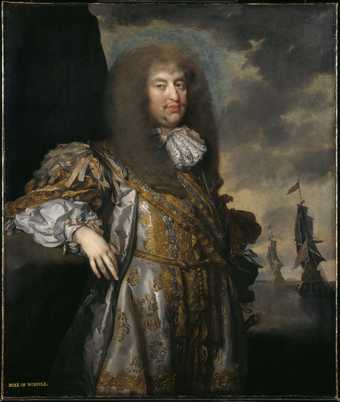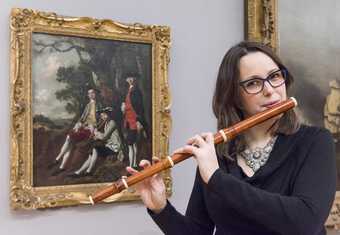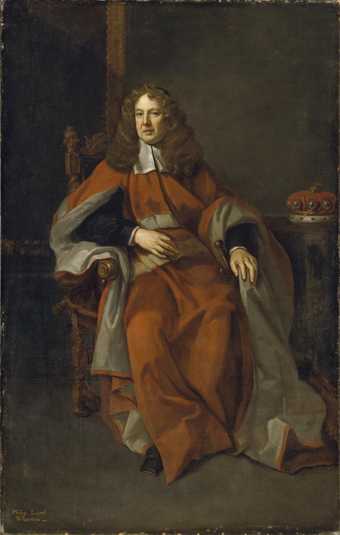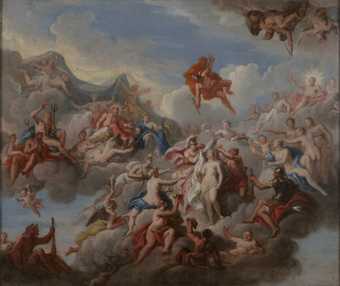
Louis Laguerre The Creation of Pandora (design for the staircase ceiling at Petworth House) 1702 Victoria and Albert Museum, London
Baroque rose to prominence in the seventeenth century. It is often defined by large-scale elaborate paintings that were realistic in style, but also flamboyant in their detail.
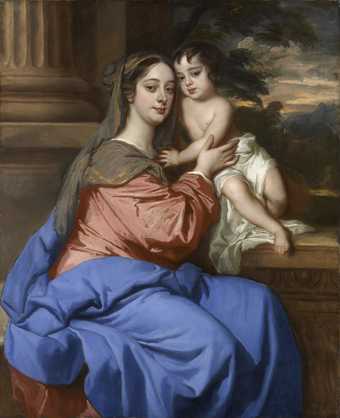
Sir Peter Lely Barbara Palmer (née Villiers), Duchess of Cleveland with her son, probably Charles Fitzroy, as the Virgin and Child c.1664 National Portrait Gallery
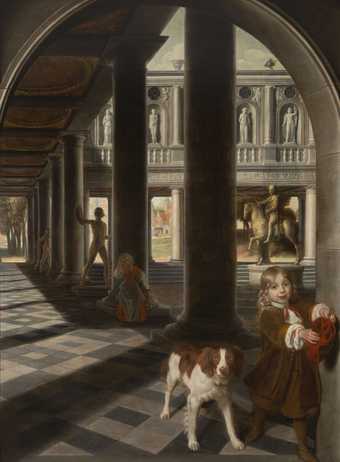
Samuel van Hoogstraten Perspective Portrait of a Boy Catching a Bird Private Collection
In British society, paintings in the style of baroque were a way of expressing one’s status and power.
Portraiture
If your portrait was painted in baroque style, it showed that you were a person of wealth and importance.
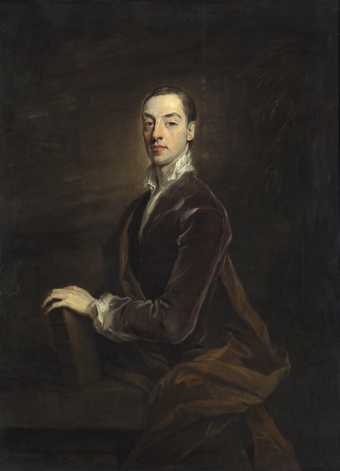
Sir Godfrey Kneller Matthew Prior 1700 Trinity College, University of Cambridge
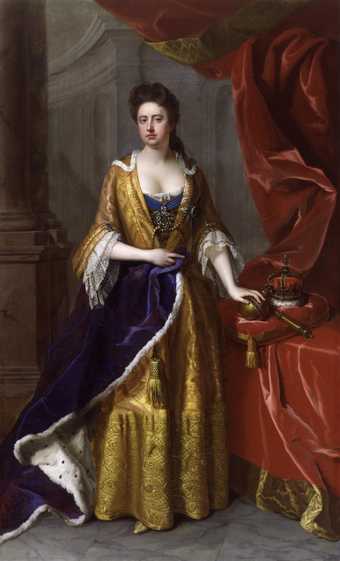
Michael Dahl Queen Anne c.1702 National Portrait Gallery, London
There is an air of camp self-confidence and status in the way that these subjects pose.
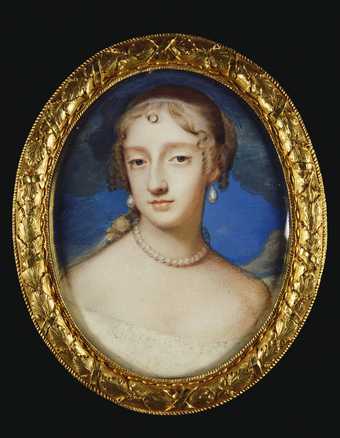
Samuel Cooper Frances Teresa Stuart, Duchess of Richmond c.1663-1664 The Royal Collection Trust
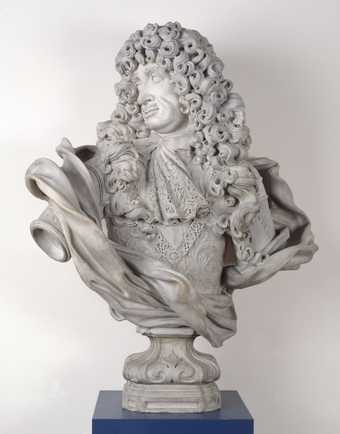
Honoré Pelle Charles II 1694 Victoria and Albert Museum
The commissioning of a portrait acted as a defining seal of one's power. Portrait's recorded one's success. The more elaborate the painting, the greater the illusion of power that was presented.
Scale
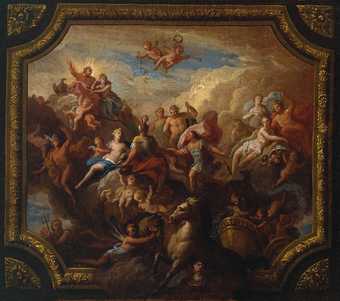
Sir James Thornhill
The Apotheosis of Romulus: Sketch for a Ceiling Decoration, Possibly for Hewell Grange, Worcestershire (c.1710)
Tate
Size really did matter for the baroque aesthetic. Large scale murals were often commissioned to decorate homes and public buildings to create a sense of ornate beauty.
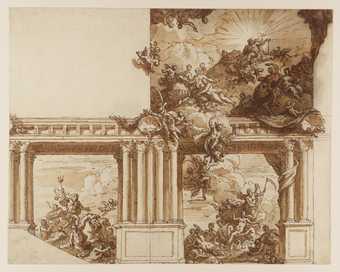
Sir James Thornhill
A Ceiling and Wall Decoration (ł¦.1715–25)
Tate
Artists like Sir James Thornhill created murals that adorned the architecture of locations like Chatsworth House and the inside of the dome at St Paul's Cathedral. They presented an awe-inspiring beauty that emphasised the grandness of the space.
Restoration
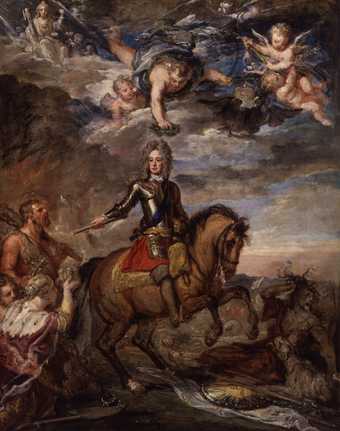
Sir Godfrey Kneller John Churchill, 1st Duke of Marlborough c.1706 National Portrait Gallery, London
The seventeenth century saw challenges to both crown and church, the key establishments ruling society. Art became a method through which they could reaffirm their power.
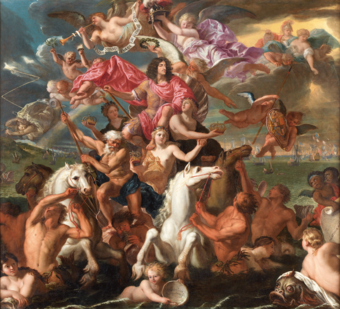
Antonio Verrio The Sea Triumph of Charles II c.1674 The Royal Collection Trust/© Her Majesty Queen Elizabeth II 2019
The baroque period in Britain began with the restoration of Charles II to the throne in 1660. Artists were commissioned to sell the idea that the crown was secure and order had been restored. Antonio Verrio's The Sea Triumph of Charles II shows a regal Charles II riding into the centre of the painting. He is placed at a height where he dominates over the ensemble, but just under the heavenly angels who celebrate his return. The monarch was seen as appointed by divine right and Verrio's painting re-establishes Charles as the rightful ruler.
In 1666, the Fire of London burnt down St Paul’s Cathedral, the architectural figurehead for religion in Britain. The new design for St Paul's, as shown below, required a grandeur that eclipsed the former building and showed that the church was stronger than it had ever been.
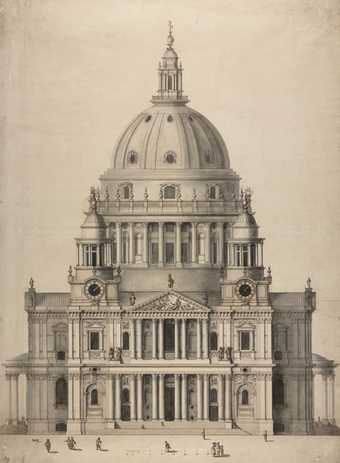
Sir Christopher Wren, Nicholas Hawksmoor St Paul's Cathedral: Elevation from West c.1702 All Souls College, Oxford
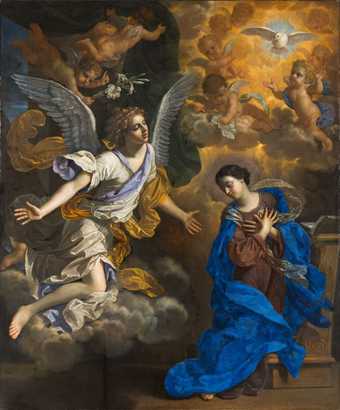
Benedetto Gennari The Annunciation 1686 Collection of The John and Mable Ringling Museum of Art, the State Art Museum of Florida, Florida State University, Sarasota, Florida
Through these artworks, the establishment could project a feeling of security and control to the British people.
Magnificence
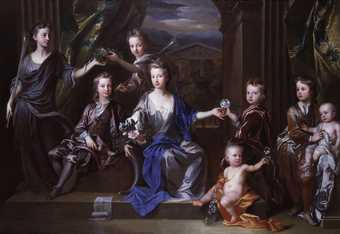
John Closterman The Children of John Taylor of Bifrons Park 1696 National Portrait Gallery, London​​
Baroque art was designed to be an extravagant spectacle. This emotional feeling of wonder you feel when looking at these artworks leads you to think of the wealth and power behind their creation. Historically, the viewer was directed to think of the commissioner, not the artist.
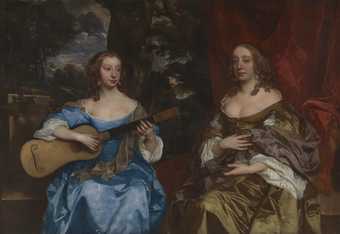
Sir Peter Lely
Two Ladies of the Lake Family (c.1660)
Tate
Many patrons who asked to have their portrait taken were female. Beauty was regarded by the patriarchy as the greatest power a woman could have. At Petworth House a 'Beauty Room' was created at the request of the Duke and Duchess of Somerset. The room showcased the portraits of female cousins in the family.
These women used the male gaze of their painters to their own benefit. Through their portraits they could be admired for their beauty and honour their families. It was an empowering practice. Baroque portraiture was one of the few ways in which women could exercise power.
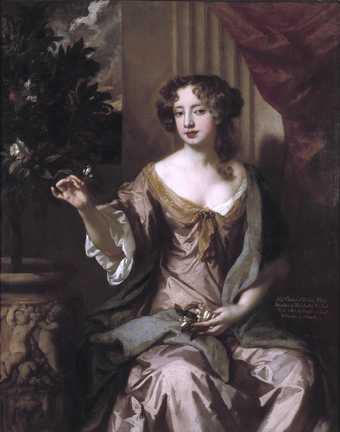
Sir Peter Lely
Elizabeth, Countess of Kildare (c.1679)
Tate
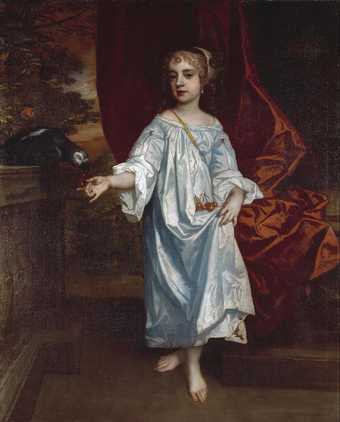
Sir Peter Lely
Girl with a Parrot (c.1670)
Tate
Sir Peter Lely was a highly regarded Dutch painter working at the time. He spent his career in England, being commissioned by women of the royal court to paint their portaits.
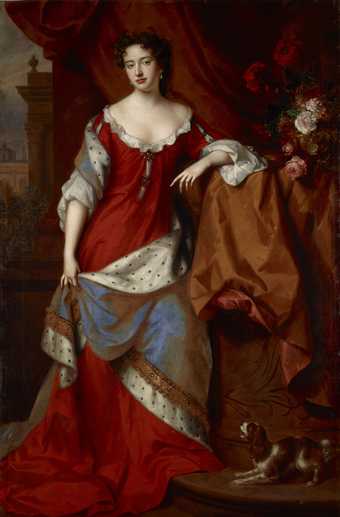
Willem Wissing Queen Anne, when Princess of Denmark c.1685 National Galleries of Scotland
Baroque art heightened reality and created illusions of beauty and power. Like a filter on Instagram, it masked the cracks and presented the world with a perfected version of life.

